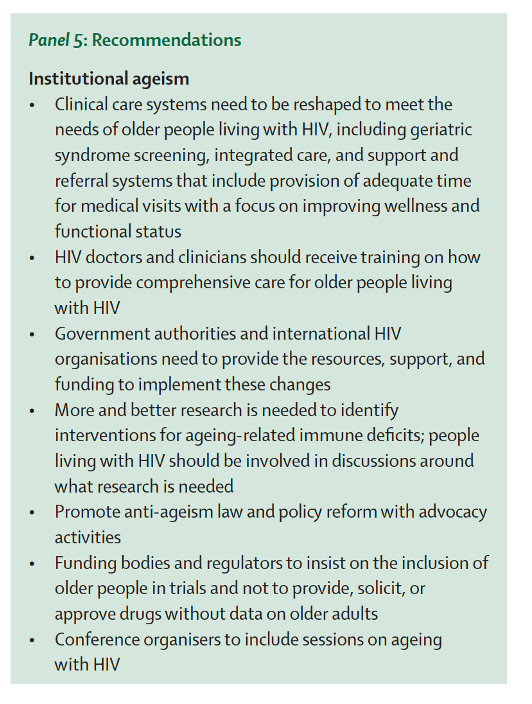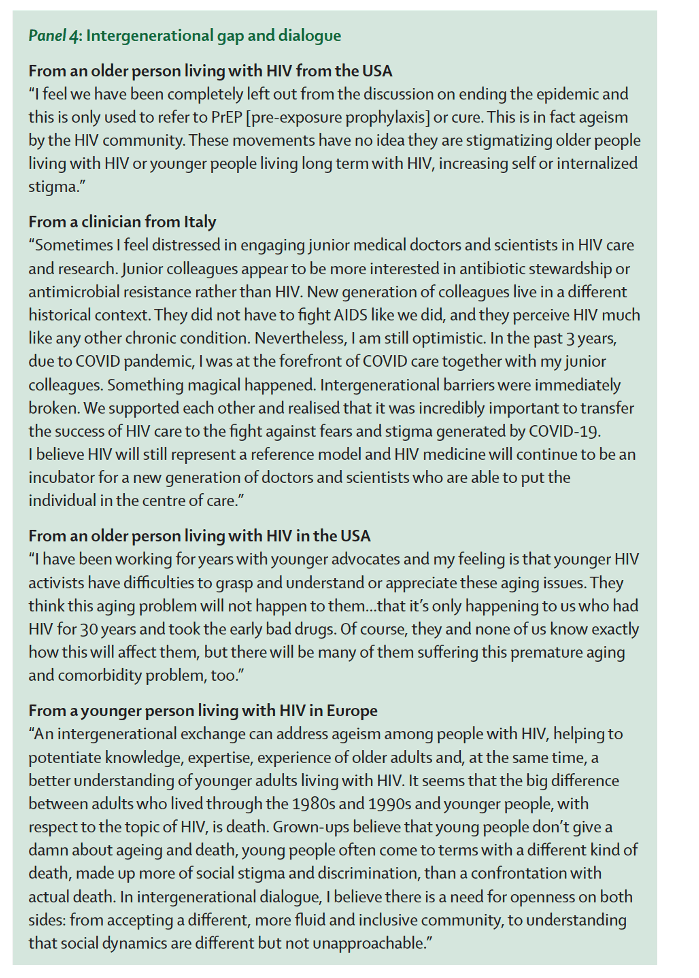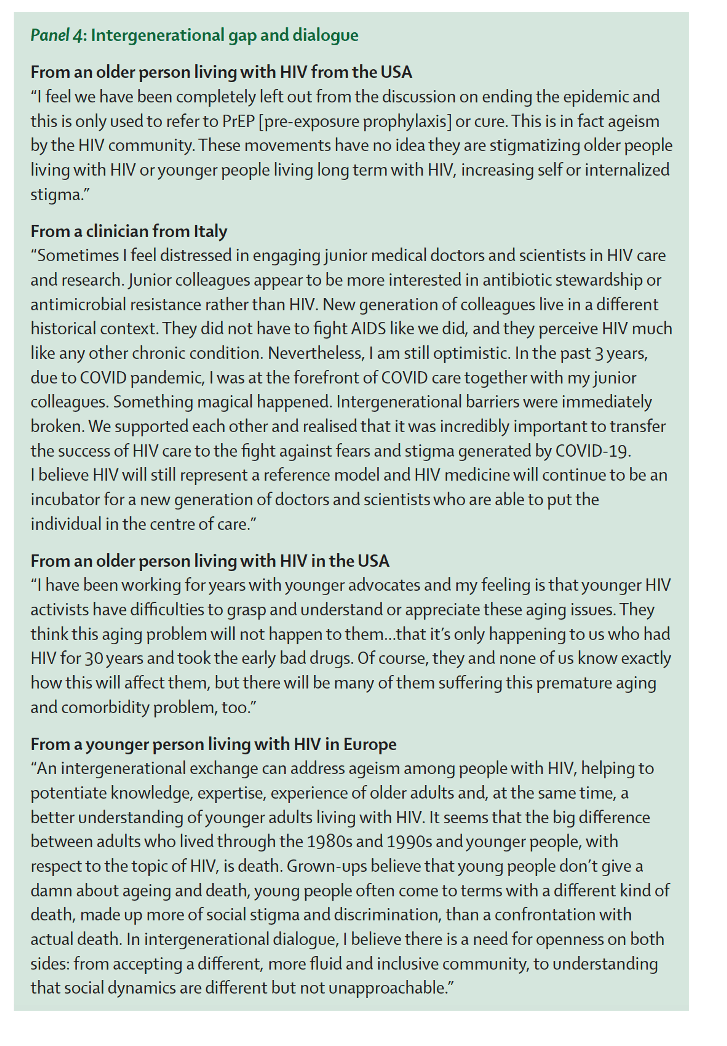| |
Ageism: the -ism affecting the lives of older people living with HIV
|
| |
| |
Download the PDF here
Nov 2023The Lancet
Giovanni Guaraldi, Jovana Milic, Mario Cascio, Cristina Mussini, Esteban Martinez, Jules Levin, Daniele Calzavara, Rebecca Mbewe, Julian Falutz, Chloe Orkin, Matteo Cesari, Jeffrey V Lazarus
"Ageism is prevalent and ubiquitous, but it remains largely unrecognised and unchallenged in society and in health care.”
Many people living with HIV have not had the opportunity to build a professional career due to their short-term future perspectives and, as a result, live in conditions of economic hardship.
Institutional ageism, as experienced by Bruno in the relationship with his new general practitioner, refers to the laws, rules, social norms, policies, and practices of institutions that place individuals at a disadvantage because of their age. This facet of ageism can manifest itself across different settings, such as those providing health and social care, in the workplace, the media, and the legal system.1
Interpersonal ageism arises from interactions with other groups of people in a community.
Since 2012, the Office of AIDS Research of the National Institutes of Health commissioned a working group to develop an outline of the current state of knowledge and areas of crucial need for research in HIV and ageing.35 This Position Paper highlights that research should also explore how ageism contributes to worse physical, mental, and social wellbeing outcomes and intersectionality with socioeconomic status, employment, sex, and education.
Women living with HIV face various challenges in addition to their age (panel 3). Their sex, race, and cultural and faith beliefs often compound their negative experiences of living with HIV.
In an HIV setting, a longitudinal study including more than 1000 people living with HIV and people who were HIV-negative showed that negative self-perception of ageing (ie, older subjective age and low ageing satisfaction) was associated with frailty transitions (from either a non-frail to frail, frail to non-frail, pre-frail to frail, or frail to pre-frail) when compared with non-frail people.9
Loneliness worsens cardiovascular risk and is associated with a higher risk of death in some studies.10, 11

Summary
WHO defines ageism as stereotypes, prejudice, and discrimination based on age. Ageism is a multidimensional concept that encompasses multiple components related to the individual, the social group, and the institution in different cultural and environmental settings. In people ageing with HIV these elements include self-stigma, discrimination in society, and experiences in care, many of which are unique to older people. In this Position Paper, we use experience of people with HIV and clinicians taking care of them to explore these issues in high-income countries. The intersectionality of multiple -isms, which affect the lives of older people living with HIV, and ageism enhance several HIV-related issues, including self-inflicted stigma, and loneliness. Research is needed to explore how ageism contributes to worse physical, mental, and social wellbeing outcomes for people with HIV. The model of care for older people living with HIV needs to go beyond virological success by adopting a geriatric mindset, which is attentive to the challenge of ageism and is proactive in promoting a comprehensive approach for the ageing population. All stakeholders and the community should work together to co-create institutional strategies and educational programmes and enable respectful intergenerational dialogue to foster a stigma-free future for older people living with HIV.



|
|
| |
| |
|
|
|